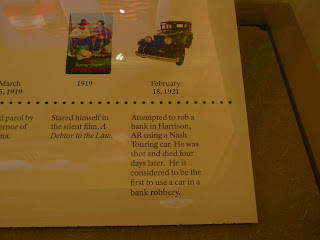September 1, 2016
St. Augustine, FL
What an adventure this has been! But it is time to go home and to bring this blog to a close.
Over the past 111 days, Ryder and I have traveled in the RV over 20,000 miles through 34 states and 4 Canadian Provinces. I drove through rain, snow, a tropical storm and dust storms. I have gone up and down mountains on grades as steep as 12% and on paved and unpaved roads than could be described best as goat paths and washboards.
I only spent 6 nights in hotels/camps (two on the excursion to Nome, three on the gravel-car trip to Prudhoe Bay, AK, and one in Las Vegas after spending the previous night in Death Valley at 119 degrees.) There was only one night of dry camping in the parking lot of a local park, when I couldn’t get the RV down a narrow, dirt road that led to the campground.
In addition to this, I rented 6 cars locally for a day or several days when I wanted to go to places that the RV couldn’t or shouldn’t have gone.
I passed through US and Canadian Customs & Border Patrol 12 times as I meandered on my way.
I saw black and brown bears, elk, caribou, reindeer, ptarmigan, fox, wolves, porcupines, marmots, roadrunners, Arctic ground squirrels, seals, otters, whales, eagles, hawks, buffalo, Yak, muskox, Dall sheep, goats, zebra, llama, ostrich, bison, moose, antelope, deer and coyote.
The trip was not without challenges, though. The first of two flat tires was in the driveway in Martinsburg the day before I left.
Ryder’s emergency eye surgery occurred during the first week. I lived on Day/Night Quill for the first 10 days of the trip. The air conditioner went out, the hot water heater element went out, there was a propane issue and a plumbing issue. I got two rock holes (fingers) on the windshield of the RV and one on a rental car. One I-pad got crushed and my eyeglasses broke.
I survived swarms of mosquitos, larger and denser than I ever imagined, extreme heat and extreme cold.
I thwarted a break-in of the RV while I was inside it and got to use words and tones that my mother most likely would not have approved of in any other circumstance. Ryder is definitely not a guard dog! She didn't make a peep!
I avoided a disaster in Canada by making it through a highway one day before it was washed away by flood. And I drove past three live forest fires.
The most expensive gasoline was in Prudhoe Bay, AK where they drill for it - $5.40 per gallon. Most expensive 12-pack of Diet Coke was about $13 and a (small) bag of Lays potato chips were $8 in Nome, AK.
But most of the trip was absolutely wonderful. I got to hang with Keith and his family on the Kenai Peninsula, with George and Pam in Vancouver, BC and with Craig in California.
I had two offers to buy drugs in Great Bend, KS...they obviously mistook the RV for a meth lab. (Watching too much Breaking Bad??)
I had the awesome 4-day trip to Prudhoe Bay, swam in the Arctic Ocean and saw Russia and the 3-day flight to Nome to see the real outback area. I took car ferries 4 times and drove through more tunnels than I can count. I took a glacier tour in Whittier, AK and a high speed canyon boat in Talkeetna. I rafted down the Nenana River near Denali and took a Cessna flight to the top of a glacier to mush sled dogs. I gold panned in Chicken and Fairbanks, AK. I caught my limit of halibut on a charter boat near Soldotna, the halibut capitol of the World.
I saw reality TV stars of at least 4 Alaska-themed shows and saw filming locations for several shows, including Once Upon a Time. The puppy even had a couple of spa days of her own.
I traveled through 34 states... visited 25 US National Parks, 10 National Monuments, 4 National Memorials, 2 National Battlefields, 12 National Historic Sites, 3 National Lakeshores, 1 National Battlefield Park, 6 National Recreation Areas, 4 National Preserves , 2 National Historic Parks, 1 National Military Park, and 1 Memorial Highway, as well as numerous Canadian National and Provincial Parks.
I planned this trip for almost 5 years. It was awesome! I really only made one detour from the original planned route and that was after spending the night in Death Valley...the 119 degree (Dry ????) heat did me and Ryder in. Her poor tongue was dragging on the ground...Instead of prancing she was hopping as the ground was too hot for her little paws. Don't know what I was thinking when I planned Death Valley in August!!!! Instead of taking the southern route back to Florida, I took a more central, cooler route.
I had planned about 250 miles per day on average and added days for down-time periodically. The pace was just about perfect. And today, well, with the hurricane coming across Tallahassee, I decided to make the final drive in one day instead of two.
Now it’s time to start thinking of another destination for another day!



























































